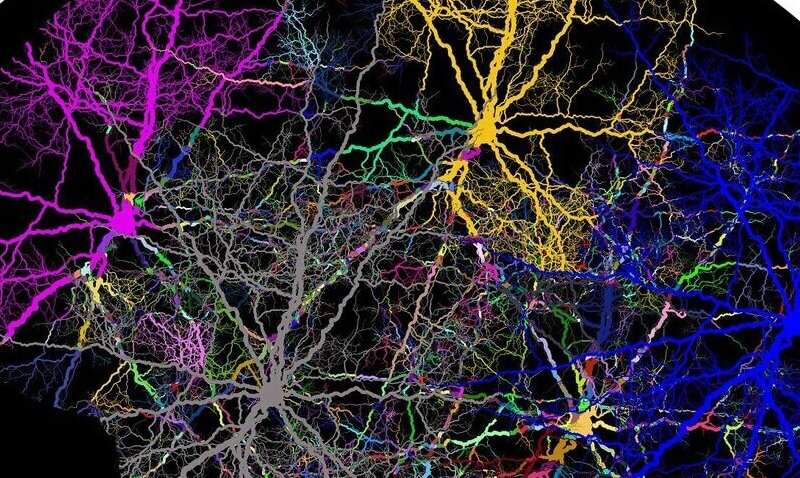This article has been reviewed according to Science X's editorial process and policies. Editors have highlighted the following attributes while ensuring the content's credibility:
fact-checked
peer-reviewed publication
trusted source
proofread
Social deficits and seizures in autism genetic subtype tied to overexcited brain circuits

Northwestern Medicine scientists have identified the cause of a genetic subtype of autism and schizophrenia that results in social deficits and seizures in mice and humans.
Scientists have discovered a key feature of this subtype is a duplicated gene that results in overactive or overexcited brain circuits. The subtype is called 16p11.2 duplication syndrome.
"We found that mice with the same genetic changes found in humans are more likely to have seizures and also have social deficits," said lead author Marc Forrest, research assistant professor of neuroscience at Northwestern University Feinberg School of Medicine.
Peter Penzes, senior author of the study, and his team also showed when they reduced the levels of a gene—PRRT2—in the duplicated region, brain activity in mice returned to normal, normal social behavior was restored and seizures decreased.
"Our data, therefore, demonstrates that brain over-activation could be causing both seizures and social deficits in this syndrome, and that too much PRRT2 is responsible for this," Forrest said.
The study was recently published in Nature Communications and was conducted in the laboratory of Penzes, director of the Center for Autism and Neurodevelopment and the Ruth and Evelyn Dunbar Professor of psychiatry and behavioral sciences at Northwestern.
Because the gene PRRT2 regulates how neurons talk to each other, inhibiting synapses or connection points between neurons could help treat both seizures and autism symptoms in this syndrome, Forrest said. This approach could also be used more broadly in other types of neurodevelopmental disorders with brain over-activation, which has been shown in other subtypes.
"Our work now shows that we can focus our efforts on targeting the PRRT2 pathway for novel therapies, and these could potentially cure core symptoms of 16p11.2 duplication syndrome," Forrest said. "If we learn how the 16p11.2 duplication causes illness, maybe we can also learn more about what causes autism and schizophrenia, in general, and create better treatments."
Neurodevelopmental disorders affect 10 million in U.S.
Neurodevelopmental disorders such as intellectual disability, autism and schizophrenia are common and affect approximately 3%, or about 10 million people in the U.S., but no effective treatments are available. The 16p11.2 duplication syndrome affects about 0.3% of these individuals or about 30,000 people in U.S.
"We lack a clear understanding of what causes neurodevelopmental disorders, therefore, it is difficult to design good treatments," Forrest said.
Different changes in DNA sequence can cause neurodevelopmental disorders
Genetics studies in the past decade have taught scientists that many different changes in the DNA sequence can cause neurodevelopmental disorders. One example is copy number variants (CNVs).
CNVs are deletions or duplications of chromosomal DNA. Unlike Trisomy 21 (Down syndrome), where an entire chromosome is copied, in CNVs just a small amount of genetic material is affected. In the CNV, Penzes and his team studied (the 16p11.2 duplication), about 30 genes on chromosome 16 are duplicated.
The scientists are the first to look at protein changes that occur in the presence of the 16p11.2 duplication in a mouse model.
"This is important because proteins are the actual building blocks of the brain and neuronal circuits and offer unique insights compared to mRNA expression, which is what researchers have looked at previously," Forrest said.
This work is part of the Center for Autism and Neurodevelopment's effort to understand the causes of autism and its related conditions.
Northwestern co-authors include Marc Dos Santos, Nicolas H. Piguel, Vikram A. Bagchi, Leonardo E. Dionisio, Yi-Zhi Wang, Jeffrey N. Savas, Nicole A. Hawkins, Dina Simkin, Alfred L. George Jr. and Jennifer A. Kearney.
More information: Marc P. Forrest et al, Rescue of neuropsychiatric phenotypes in a mouse model of 16p11.2 duplication syndrome by genetic correction of an epilepsy network hub, Nature Communications (2023). DOI: 10.1038/s41467-023-36087-x





















